Croatia – A Cursory Introduction to a Dalmatian Odyssey
It’s October 6, 2015 and Alison and I are about to embark on a two week trip to Croatia and in particular, to the province of Dalmatia. We have long heard from other travellers about the beauty of the Croatia and in particular the coast of Dalmatia which lies on the east side of the Adriatic Sea across from Italy on the western side. Here is a map of Croatia.
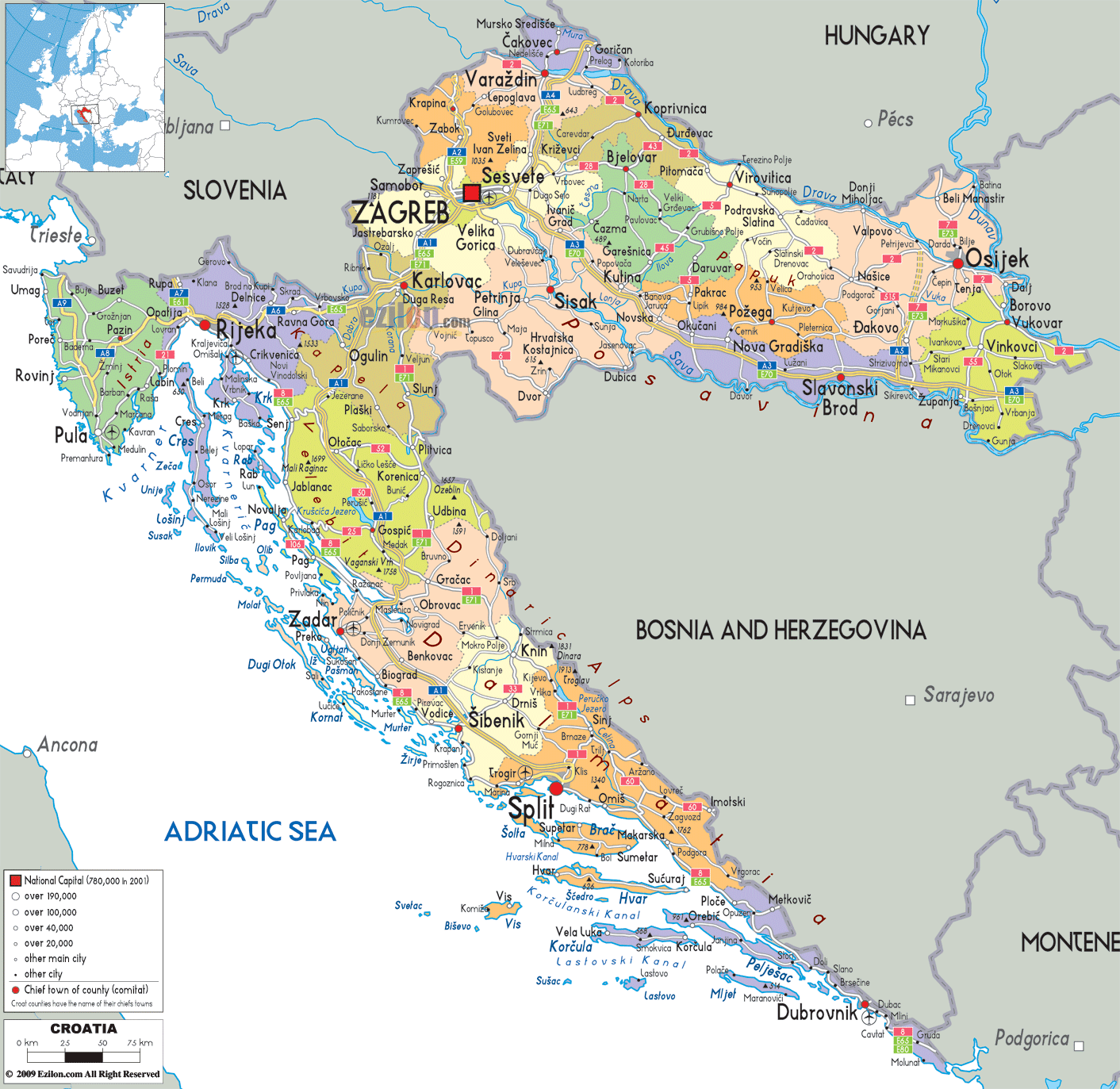
Our travels will include just a tiny part of the country starting in the city of Split and ending at the southernmost city of Dubrovnik. For most of the trip we will be traveling by boat and bike with the Nova Scotia based tour company Pedal to Sea Adventures which also runs the Bike & Bean coffee shop in the old French Village train station not more than a few miles from where we live. For years I have been driving by the place on the way home from work and seeing the sign inviting people to join on the upcoming trip to Croatia and saying to myself “We’ve got to do that someday”. Well the someday starts today.
The boat trip starts and ends in the city of Trogir and lasts a week, but I know this will not be enough time so we have added three days at the beginning and end. We will start out in Split and end in Dubrovnik, both cities about which I have heard and read nothing but excellent things. Both have been on my bucket list since long before there were bucket lists.
Brief History of Croatia
By way of brief background, Croatia was from the end of WWI until the 1980’s a part of the Yugoslav federation or Yugoslavia as most people know it. From 1945-1980 Croatia was part of dictator Josep Broz’ (or Tito as he fashioned himself) communist state and made little of the economic progress that was taking place in European Union countries to the west. After Tito’s death and with the emergence of the fanatic Slobodan Milosevic in Serbia, Yugoslavia’s various republics engaged in a series of bloody conflicts that included ethnic cleansing and some of the worst atrocities since WWII. The primary combatants were the Serbs who opposed the breakup of the country they had long dominated, the Croats who wanted their own state and the muslim Bosnians who also wanted their own state and not to be persecuted by the Serbs. To make a long story short, Croatia gained its full independence and is now a member of the EU.
An interesting and timely side note is that between 1992-1993 700,000 muslim refugees were admitted into Croatia, a country of less than 5 million people. Compare that to the panic and chaos surrounding the attempts of Syrian and other refugees to get into western European countries in recent months. After the civil wars ended most of these refugees returned to their homes in Bosnia and Kosovo.
In recent years Croatia and more particularly the coast of Dalmatia has become one of the hottest new tourist destinations in the world. I am not under any illusion that we will be visiting a country unspoiled by the spread of western commercial and social culture, but there’s always a way to get the most out of any destination no matter how many other tourists you need to share it with. We’ll see how well I succeed on this odyssey, and btw, I’m not using that term loosely. Dalmatia is just up the coast from the Ionian islands from whence Odysseus hailed and his journey almost certainly took him to some of the places I will be visiting on this trip.
The journey starts with three airplane rides – Halifax to Newark, overnight from Newark to Munich and finally an early morning flight from Munich to Split on Croatia Airlines. Munich Airport describes itself as the only 5 star airport in Europe and the relatively new terminal there is enormous to the point of not making you feel like a sardine and it’s very quiet by airport standards. However, I am still a little amazed that they have not come up with a way of getting passengers onto smaller planes other than by bus. The upside is that you can get a picture of your better half boarding the plane. Note that this is a Canadian made Bombardier.
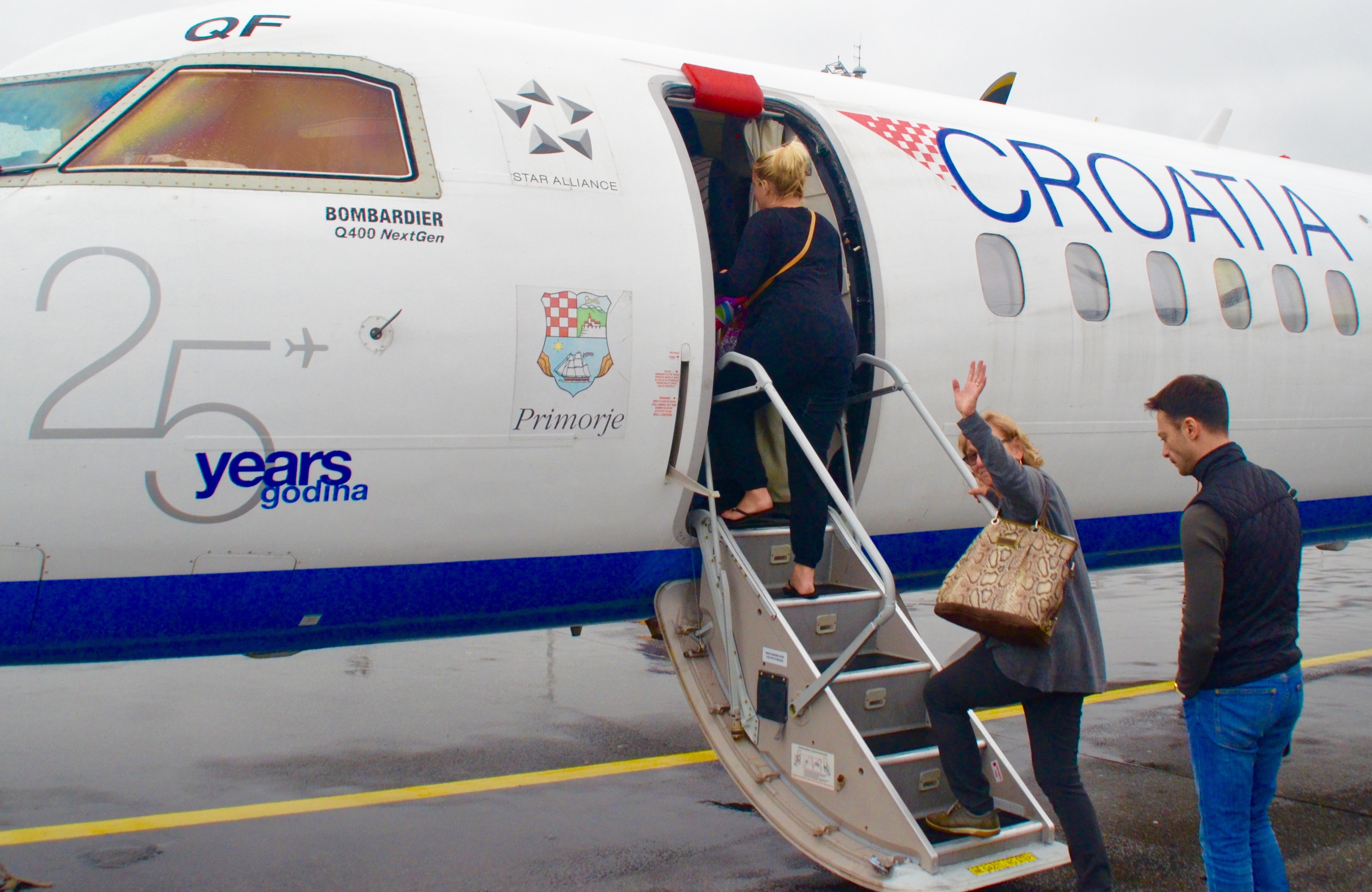
The flight to Split is about an hour and a half and I had been looking forward to watching us cross the Dolomitic Alps to the head of the Adriatic on the Veneto before flying down the eastern side of that sea into Split, but unfortunately it was overcast and the ceiling was less than 1000 feet as we landed at Split. The upside was that I saw palm trees as we were landing – never a bad thing to see palm trees at your destination.
Despite two plane changes the luggage arrived with us and clearing customs was a breeze. As an EU member no visa is required for Canadians on a trip to Croatia. I had arranged with the hotel to have a driver waiting and a tall well dressed young man with a spotless new Mercedes was on hand.
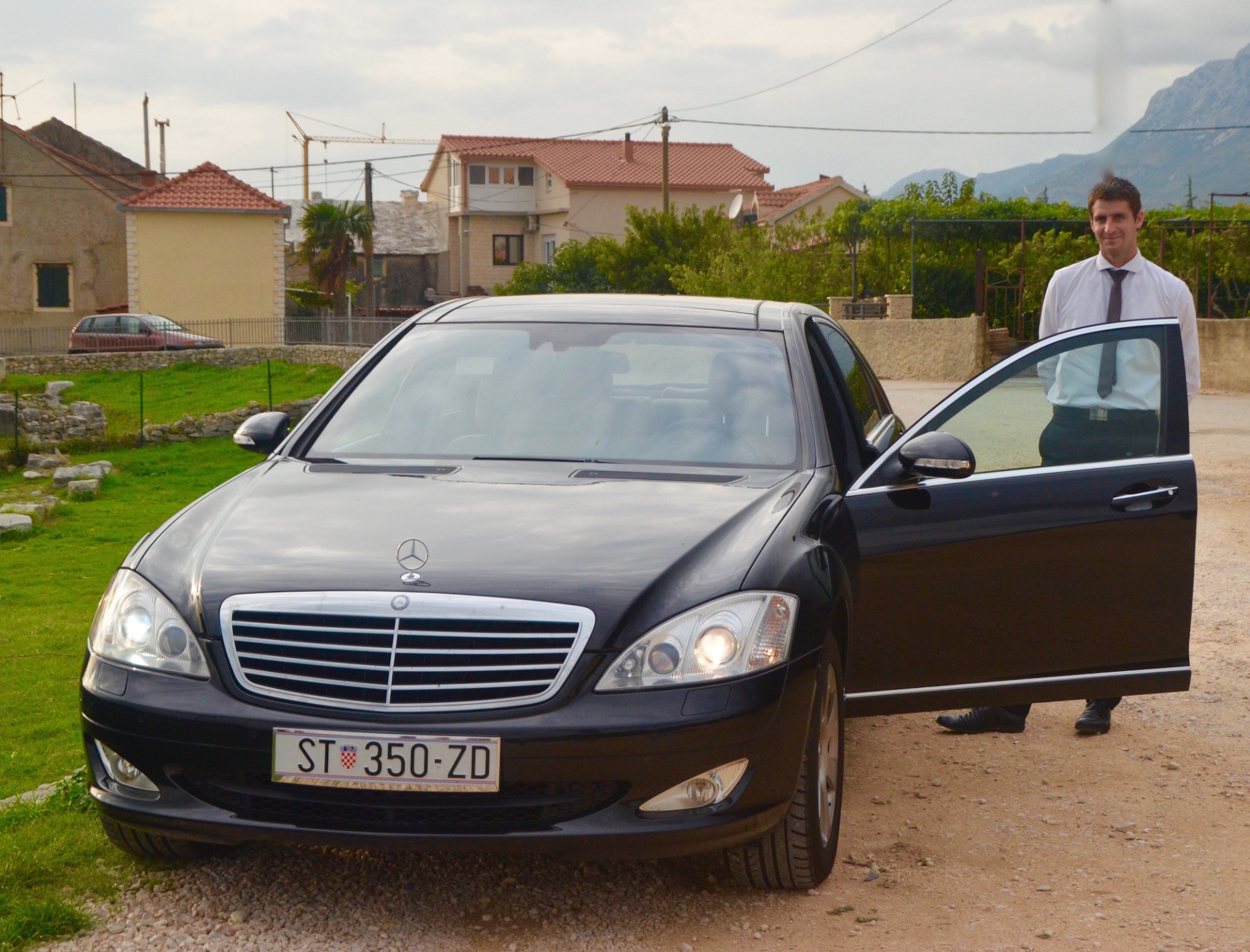
The drive into Split was thirty minutes and not very inspiring – the usual industrial stuff that seems to grow up between an airport and the city. Split is the second largest city in Croatia and probably the most visited place in the country – only Dubrovnik can give it a run in that category. It is the site of one of the great wonders of the ancient world, Diocletian’s Palace, about which more later, and has one of the largest pedestrian free areas in Europe, all of which are preserved as a UNESCO World Heritage Site.
The hotel I have booked is the Vestibul Palace which is right inside a portion of the remains of Diocletian’s Palace. We are not staying in the hotel proper, which was booked, but rather in a separate building, the Villa Dobric which is in another part of the old city. The only parking near the hotel is through a gated entrance between the old city and the harbour promenade which would be very bloody confusing if you were trying to do this on your own. Fortunately, Darius as our driver is named, knows exactly what he’s doing and squeezes us into what seems to be the only remaining parking space. He then takes our bags and leads us through a bedlam of various tour groups, mostly Asian, who are thronging outside the pedestrian area which can only be reached by one of a few gates that lead into what was once the interior of the palace. I’m thinking “Thank God we didn’t come here in the main tourist season”.
The streets and squares of the old city are paved with marble slabs that have been here since Roman times and are holding up well. Unlike many other European pedestrian only areas, Split is not marred by the presence of motorcycles roaring up and down every which way and making a mockery out of the no motorized vehicles rule. Here it is being obeyed with the exception of a few service vehicles that are quite unobtrusive. Within minutes of entering this place I realize it is unlike anything I have ever experienced before. While medieval towns and cities are wonderful to visit, this is in fact a town that dates from Roman times and unlike every other Roman site I have visited, this one is not a ruin, but a place where Diocletian’s palace has morphed into a functional, vibrant modern city.
Villa Dobric, First Stop in Croatia
It takes less than five minutes to reach Villa Dobric where we receive a warm welcome from the young lady on the desk. We are assigned room 1 on the second floor. The main floor has a small breakfast area and a very nice outdoor seating area. As we check in the receptionist reminds us that we can have our included breakfast at the main hotel and that it is far more extensive than what will be on offer here tomorrow morning.
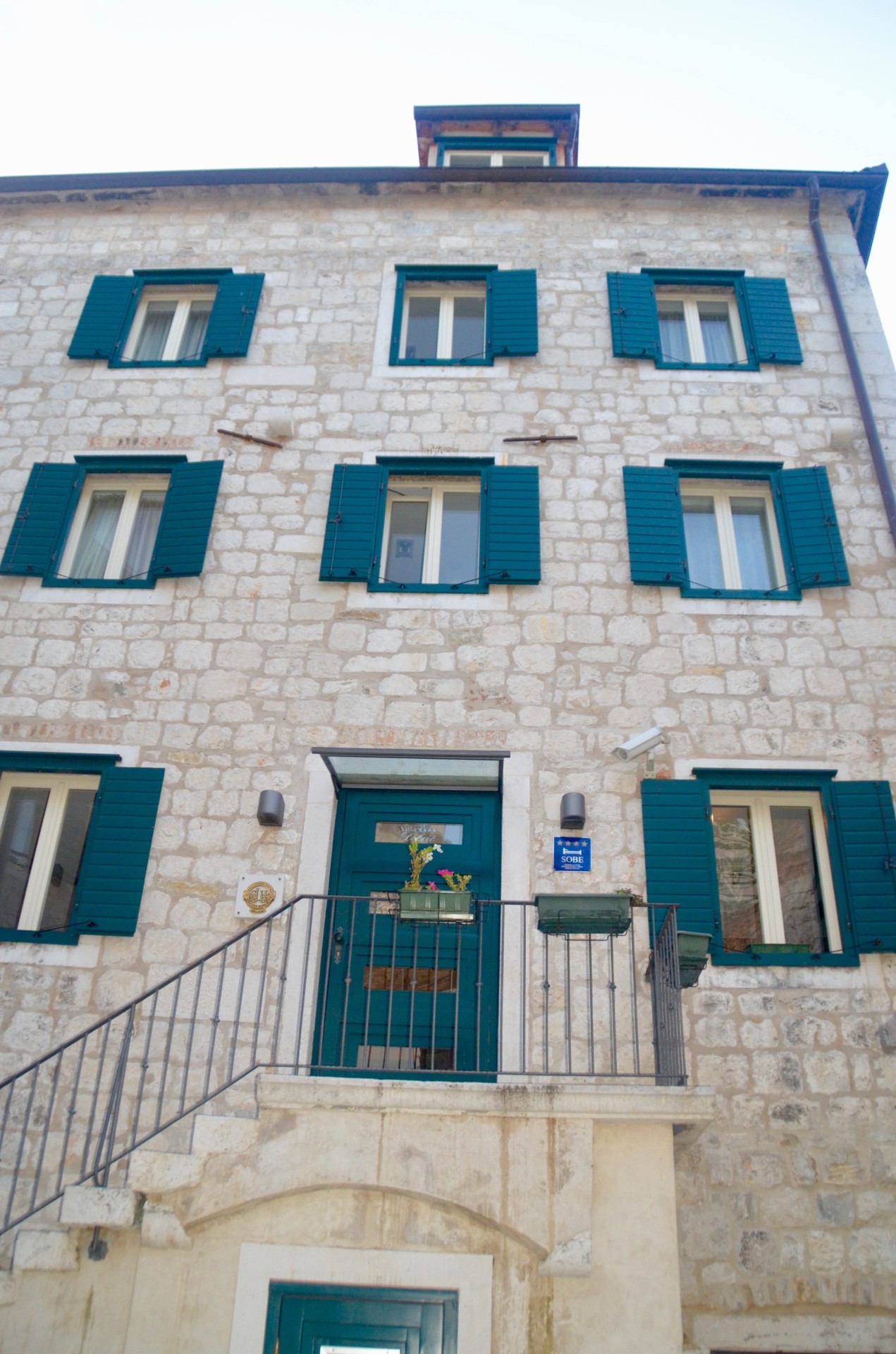
The room is exactly as pictured on the website and includes a king bed, modern plumbing, free wifi and a fridge – all my necessary requirements for a good hotel room.
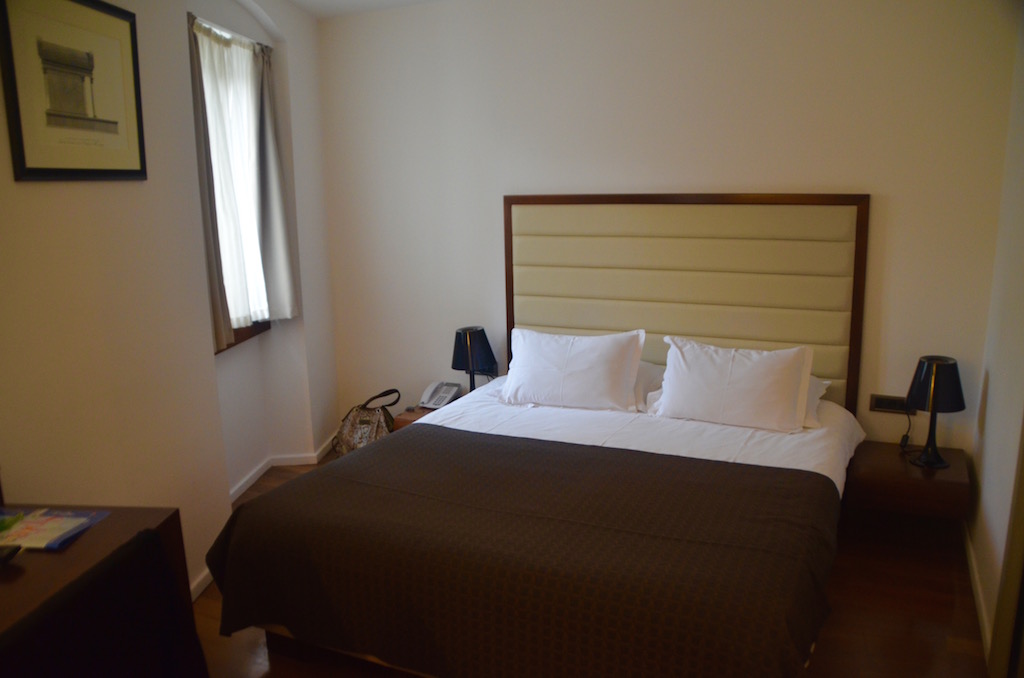
The next order of business is to find a place to buy wine and beer and I make enquiries with a young man who is now on the desk. He gives me directions to a nearby place and then says, “I’ll take you”. He locks up and leads me a short distance to grocery store that you would really have to look twice to notice, but inside is quite large. He helps me pick out two bottles of dry Croatian wine and we return to the hotel and he volunteers to chill them in the fridge in the reception area which is apparently very cold. Now that’s service.
The streets of old Split are more like a maze than anything you can reliably make sense of. When the Romans built the first roads here they were in typical Roman fashion straight and wide, but after the empire collapsed people were not so far fussy and pandemonium replaced planning. Here’s what I’m writing about. This is one of the two original main streets that crossed and divided the palace into four equal squares.
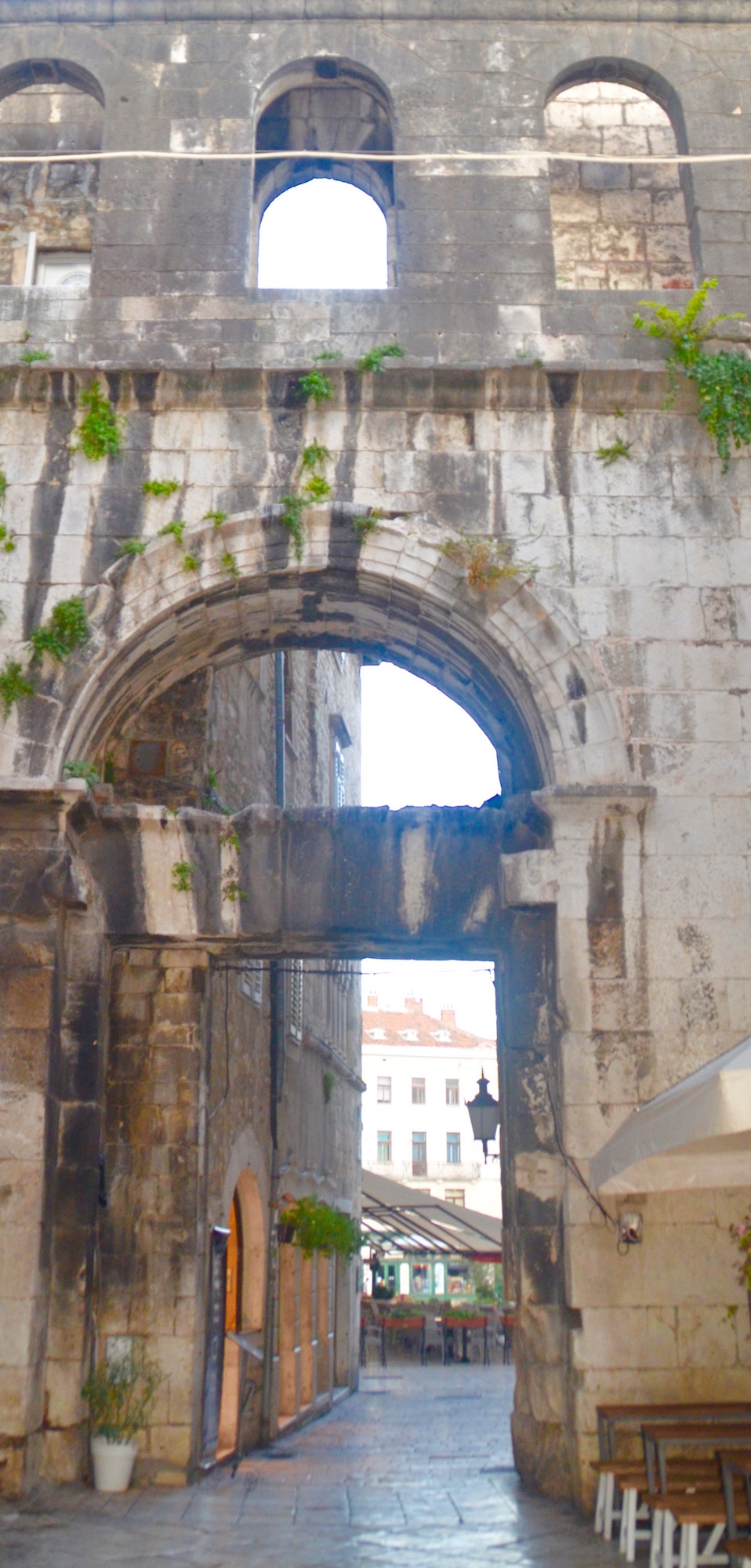
And this is what happens when someone decides to build out into the street. Assuming the original arch does not intrude into the building, it is amazing it did not fall down during construction.
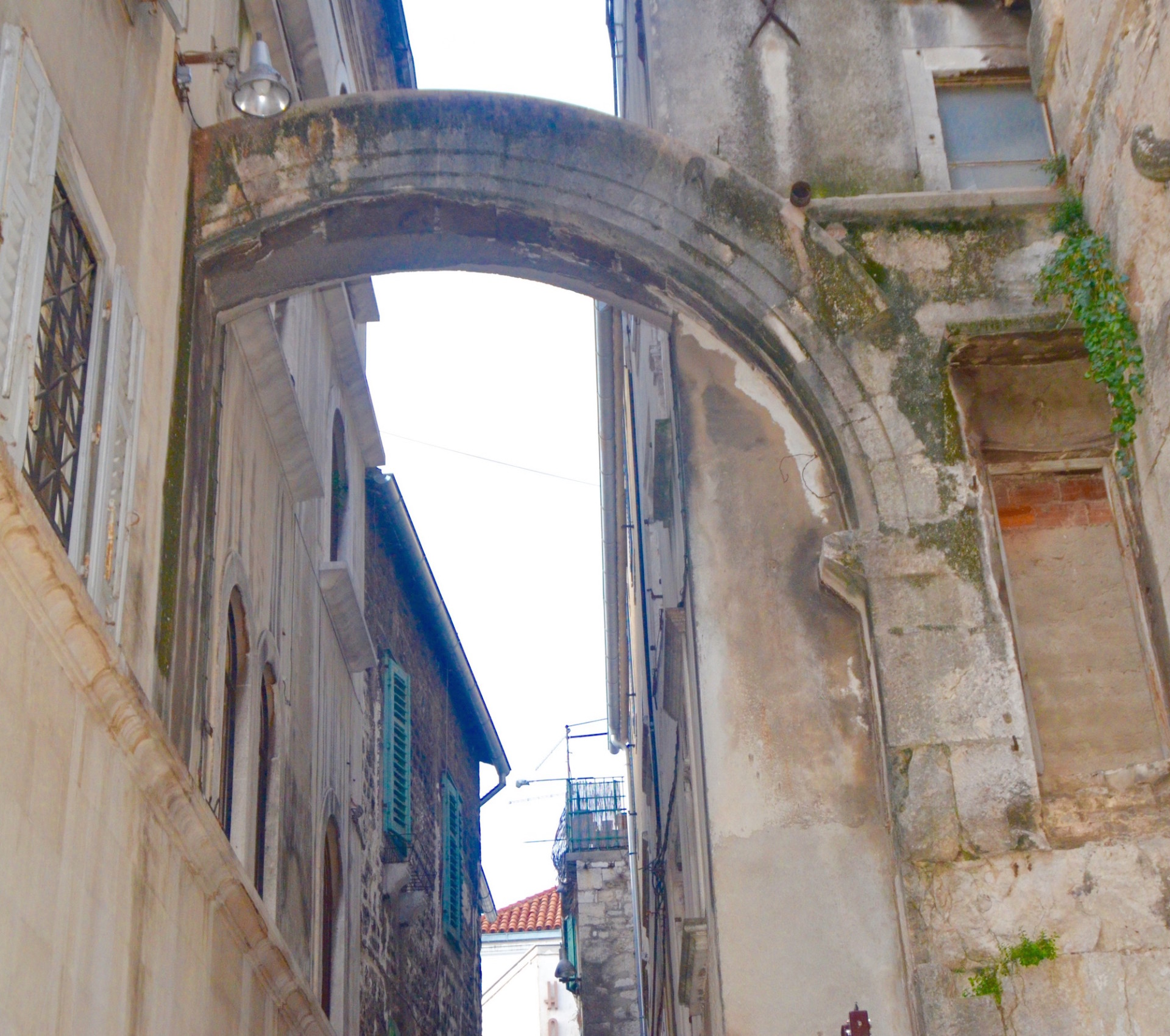
Makarun Restaurant, Split
Back in the room there’s just time to freshen up before having an early dinner. For me the way to beat jet lag is ignore it by staying awake until at least 9:00 on the first night. I ask the same guy at reception about a restaurant and he recommends Makarun which is very close and hands us an umbrella as we leave.
Makarun is down a small alleyway and it’s not the type of place you are likely to stumble upon. By now it is raining so we opt to sit inside amid cozy modern decor that includes some nice looking clamshell overhead lamps.
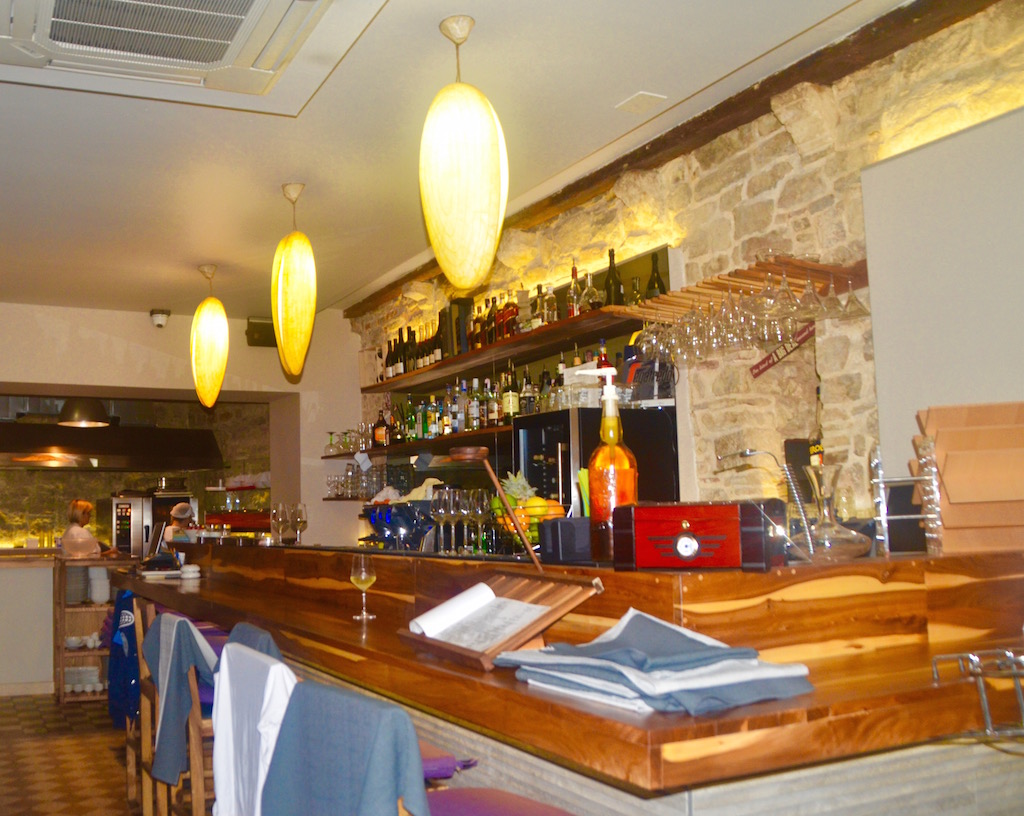
We ask the waiter for help selecting a dry Croatian wine as I’ve read that they are very good and vastly underpriced for their quality. What he chooses is a superb minerally white that is as good a wine as we’ve had in some time. I’m kicking my ass now for not writing down the name because you can be damn sure I won’t remember it tomorrow.
The name of the restaurant translates as macaroni which according to the website, the predecessors of the owners claim to have invented on the nearby island of Korcula. They make it fresh each day. Well you can’t pass that up. I order the version with octopus and anchovies while Alison opts for a simple tomato, basil and capers combination. The results are outstanding. Macaroni in Europe is nothing like the stuff we use for mac and cheese back home. It is longer, thinner and eaten with fresh ingredients like this is, not on the same planet as the dried stuff we are used to.
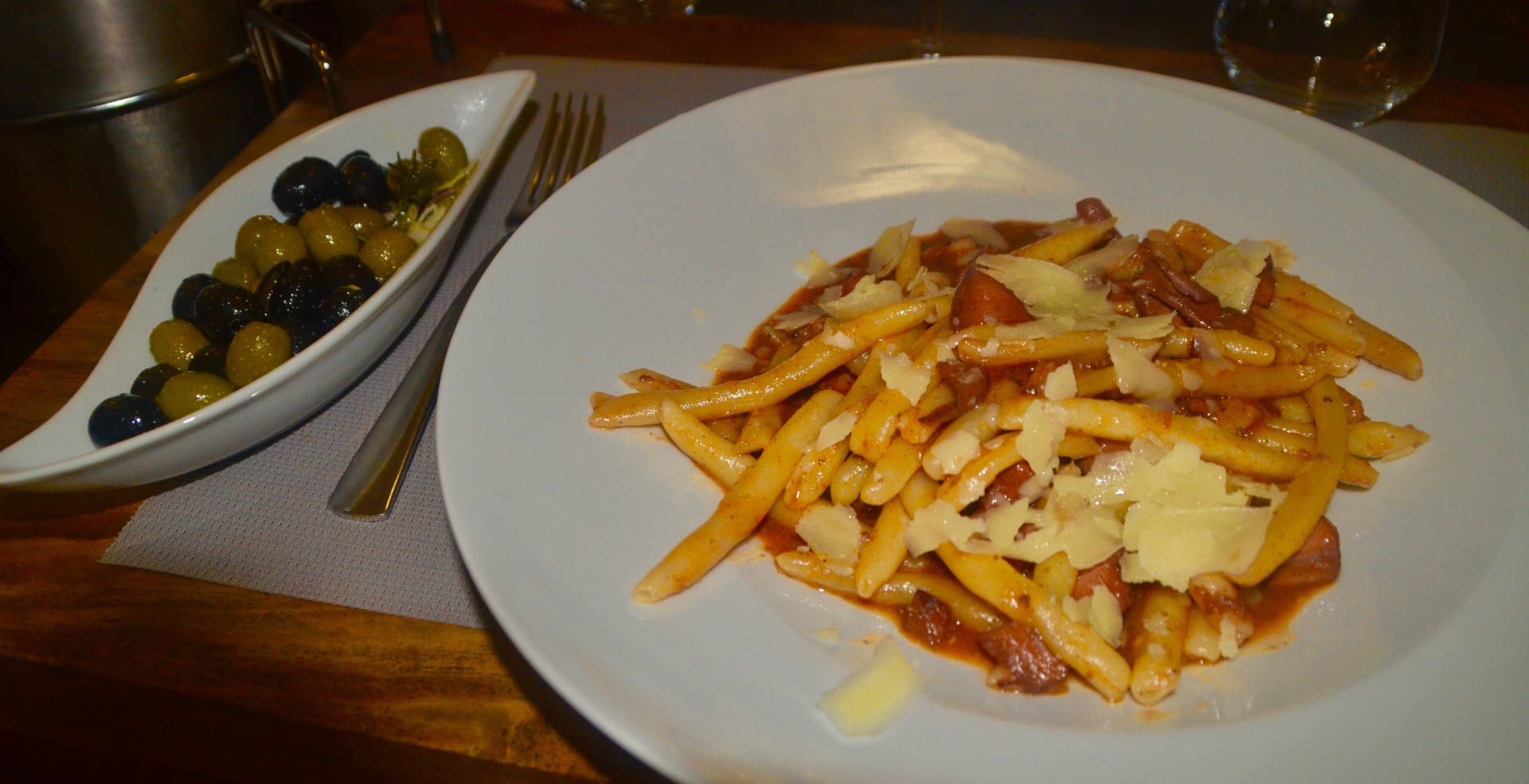
Back at the hotel I pick up one of the bottles chilling at reception and we enjoy a final glass before turning in. This first day has been almost too smooth. Let’s see what tomorrow brings on our trip to Croatia when we take a guided tour of Diocletian’s Palace.
Here is a link to the Croatia photo gallery with pics from Split to Croatia and all places in between.

